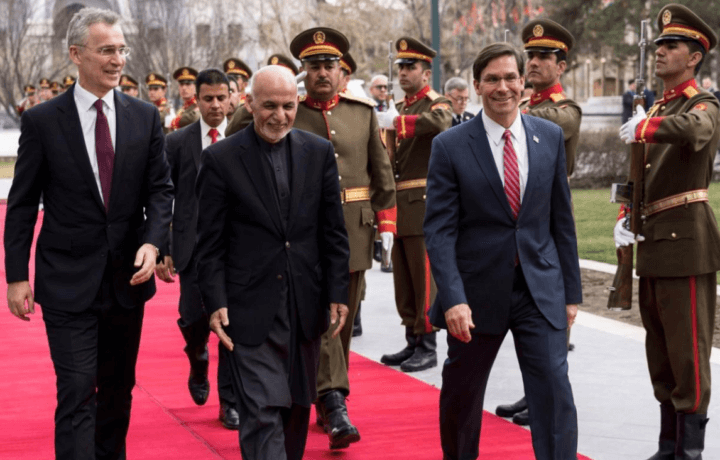A Taliban spokesperson said the Taliban movement will be ready for intra-Afghan peace negotiations by the next Eid. Eid al Adha is expected to be celebrated around the world on Friday, July 31. It is fitting that this Islamic celebration is in remembrance of the sacrifice that Ibrahim was willing to make by offering to sacrifice his son Ismail. The upcoming peace talks will be full of sacrifices big and small if they are to be successful. Whether a lamb or child is taken as sacrifice is unknown.
While many wondered if direct talks between the Afghan government and the Taliban movement will even begin at all, I sensed this event was inevitable in 2009 when the Afghan government made the first moves to end the war diplomatically and not militarily.
reintegration, reconciliation, and peace building
“If war were arithmetic the mathematicians would rule the world.” -Lord Petyr Baelish, Game of Thrones
War is not simply a mathematical equation where you can count up the dead and wounded and determine your next move or declare a final winner. Wars like the one in Afghanistan end when diplomacy moves the combatants back to a state of not-war. There is no magic date or time set for when the combatants decide that diplomacy is the only logical option –this round of peace talks may resolve nothing, or everything. Based on my experiences since 2002 in Afghan reintegration, reconciliation, and peace building policy, there are some possible outcomes to the upcoming peace talks.
Peace, War, or a Variation: 4 Outcomes
The options span a wide range because we are all entering the unknown now. All our assumptions may lead to peace or just the next phase of war in Afghanistan.
1: Peace takes hold
The Taliban settle for some key positions across the government. The Afghan government remains a republic. Afghan human rights are protected by the constitution. International partners continue to assist Afghanistan in education, medical, security, and other key areas. Pakistan ends their quest to control the Afghan government and gets serious about counterterrorism in order to rebuild international financial partnerships to save them from economic collapse. A formal cessation of hostilities replaces the temporary cease fire in place during the talks. Decades of peace-building, justice, and forgiveness finally begin.
2: Failed talks, but a second round is planned
The first set of talks, after months, do not end the stalemate on all issues between the two parties. The distance seems so great on key issues that the Taliban walk away from the talks. The parties formally leave the talks on hold, but commit to future negotiations. A cease fire continues until the future talks. This may take multiple negotiation sessions over months or years. The cease fire may not hold completely between negotiation sessions.
3: Failed talks, resumption of war with the Taliban, and NATO coalition remains engaged
Taliban walk away from talks when they realize they cannot explain even a few of the compromises they would need to make, at this point, to their fighters or Pakistani masters. The NATO coalition commits to keep their forces in Afghanistan as pressure to ensure the military stalemate does not turn in the Taliban’s favor. The Afghan National Security Forces (ANSF) resume a full offensive and hunt the Taliban and their allies. U.S. counterterrorism forces remain engaged in small numbers assisting ANDSF in locating and destroying Taliban and other terrorists. U.S. designates the Taliban movement as a terrorist organization and designates Pakistan as a full state supporter of terrorism. U.N. sanctions on the Taliban and Pakistan increase with a travel ban for all Pakistani government members and military/intelligence officers, and their families.
4: Failed talks: Pakistan intervenes after US and NATO withdrawal
Talks end so badly, due to both Afghan government and Taliban movement efforts to blow-up the negotiations, that the NATO coalition decides the mission is unsustainable and that no NATO effort will pressure the combatants to begin a durable peace. After the withdrawal of international forces, regional forces intervene. Pakistan’s military will enter the fastest and cause a major escalation with the ANDSF. This will send the region into chaos as India joins in on the violence. China will take advantage of the fallout.
Compromise Needed by Taliban
Of course, there are other scenarios. The most likely the outcome will be a combination that results in a decrease in violence. However, it will not guarantee that all Taliban insurgents and criminal militants will start to rejoin the Afghan society. The severity of the negative outcomes should push the peace negotiation participants to accept some form of peace, however imperfect at first. The Taliban will be expected to compromise the most during negotiations, which might be the first signal to watchers that the first round of talks will fail. The Taliban have not realized yet that they have lost this third proxy war for Pakistan to secure the reins of the Afghan nation for the Pakistani military.
Afghan’s Leverage Going into the Peace Talks
At the same time, the Afghan government does not understand how much leverage they have going into these talks with the military support of over 40 nations and the near unanimous political support of the U.N. for their legitimacy. Right now, the Afghan government and most citizens are very hesitant to start the peace talks. Time will tell how these talks turn out.




